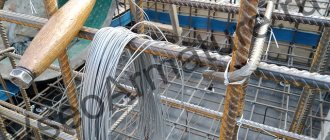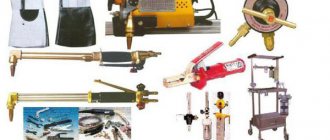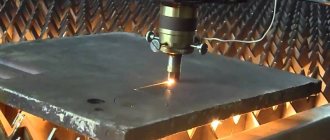In the construction of monolithic and other structures, a variety of materials are used, including knitting wire. In addition, it can be useful to sculptors at the stage of creating the basis for the frame of a future composition. Where welding or fastening hardware cannot be used, you simply cannot do without it.
What is tying wire?
We are talking about a product obtained from wire rod - a billet of low-carbon steel. Knitting wire is a reliable and elastic fastening element that bends easily and locks into the desired position. Supplied in large coils and used in the assembly of foundation frames, floors, and floor screeds. Unlike welding, which degrades the quality of the metal in the heating zone, connecting reinforcement with wire does not have this disadvantage. It is resistant to deformation and bending loads, does not corrode, which has a positive effect on strength.
Where is tying wire used?
The main area of application is construction, which involves connecting metal products into a durable and wear-resistant frame, but wire for tying reinforcement is also used in other areas:
- Production of steel ropes.
- Production of masonry nets, barbed wire, chain-link.
- Installation and packaging of goods.
- Securing cargo during transportation.
Application of Low Carbon Heat Treated Wire
If we use metal as an auxiliary material, then accordingly it should have a low cost. Often in industry, construction and everyday life, there is a need for quick and reliable fixation of various objects, both among themselves and in different spatial positions, with subsequent release without the use of additional fastening systems. In this situation, the most optimal seems to be the use of ordinary knitting wire, which has a low price and availability, consisting of more than 97% iron (a widespread element on the planet with a low cost of production). Also, steel wire with low carbon content is used as a raw material for the production of mechanisms and various meshes: woven, chain-link, welded, etc. A heating wire is made from it, covering ordinary wire with polyethylene (dielectric), and is used in monolithic work to warm up concrete in cold weather, where it remains in the body of the structure forever (the product should also be low cost). Knitting wire is also widely used in everyday life, from paper clips to various types of packaging.
Characteristics of tying wire
This material is manufactured with a cross-sectional diameter from 0.5 to 6 mm. Stainless steel knitting wire can be galvanized. Then its thickness increases to 10 mm. To increase strength and elasticity, the product is subjected to heat treatment. When choosing a material that has not been fired, it is necessary to take into account the tensile strength (N/mm²) and cross-sectional area:
- 10 mm
– 390-690; - 8 mm
– 390-780; - 4.5–5 mm
– 390-830; - 3.2–4.5 mm
– 440-930; - 2.5–3.2 mm
– 540-1080; - 1–2.5 mm
– 590-1270; - less than 1 mm
– 690-1370.
Types of knitting wire
This material differs in:
- The presence or absence of a protective coating
. Galvanized binding wire is kept in baths of molten zinc, due to which it becomes less susceptible to corrosion, which is very important when used in places exposed to aggressive external environments. - Heat treatment
. There are untreated and annealed tows. Annealed knitting wire is marked with the letter “O”. Elevated temperature changes the very structure of the material, reducing the internal stress of the steel and thereby increasing elasticity and mechanical strength. In this case, annealing can be dark or light. The first endows the material with scale. - Strength class
. It is determined by the type of alloys used in manufacturing. Knitting wire V-1 is made from low-carbon steel, but the high-strength analogue V-2 has an increased number of alloying components. A regular cord is used to connect non-tensioned frames, but a strong cord is used to tie the prestressed reinforcement.
This material can be purchased in a skein or in a reel. The first weighs from 15 to 250 kg and consists of one piece of wire. The second has a mass from 500 to 1500 kg. There are no more than three segments in it. Recently, steel knitting wire with rings has become very popular. This building material has the form of a reel, consisting of 1–5 thousand sections 8, 10, 12 or 14 cm long. The ends of each are crowned with rings, which facilitate the work of installers and significantly speed up it.
Heat treatment of tying wire
The state standard allows the production of unprocessed thermally processed products. But it is important to take into account that heat-treated steel becomes softer, more ductile, and less brittle, which allows it to be used for tying, twisting, and fixing other objects.
But such processing is an additional technological process, which means it increases the cost of production. Some manufacturers prefer to do without it, especially since GOST does not prohibit this. But there is one unpleasant point here: such a metal cord is more fragile and brittle, and according to the requirements, it must withstand at least four bends without breaking, which can only be ensured by high-quality raw materials. Therefore, savings in production are essentially impossible, since the use of higher quality raw materials increases the cost of production, and without heat treatment, standard low-carbon wire rod, as a rule, cannot withstand four bends.
Selection of tie wire
The criteria for selecting a harness are as follows:
- Construction technology
. Where the use of welding is not strictly specified, tie wire is used to bind the reinforcement elements. - Terms of Use
. If the material will be influenced by an aggressive environment, then it is better to choose the galvanized variety. - Reinforcement diameter
. The wire for a knitting gun should be thicker, the more massive the structural elements undergoing adhesion. - Price
. Galvanized material is more expensive than usual. Another alternative is copper-nickel alloy wire, but its use is justified only in luxury construction.
Tie wire thickness
This is a very important parameter on which the strength and reliability of the entire building depends. The most popular reinforcement sizes today are 8-12 mm. To knit it, wire with a diameter of 1.2-1.4 mm is used. If a material of a smaller cross-section is used, there is a high risk of its rupture. Black knitting wire with a diameter of 1.6 mm and above will not allow you to tighten the knot so that it does not come apart and remains strong.
Methods for connecting reinforcement using knitting hardware
To form a frame from reinforcement with a cross-section of 10–14 mm, knitting wire with a diameter of 1.2–1.4 mm is used. If the product has poor elasticity, the coil should be placed in an open fire, such as a fire, for half an hour. Then leave to cool at ambient temperature. You can use material with a smaller diameter, but in this case you will need double bending of the material and an increased number of nodes.
To do the job well, you need a special crochet hook, which you can purchase at a hardware store or make yourself from a paint roller by bending and sharpening its ends.
Knitting reinforcement using a hook
Knitting is done quite simply by following these steps:
Wire knitting techniques
- cutting the material into equal pieces;
- folding the desired piece in half;
- hardware is wrapped diagonally at the intersection of the reinforcement;
- a special hook is threaded into the resulting loop;
- wire ends are pulled into the loop;
- the hook rotates clockwise several times;
- a strong knot with four to five turns is formed, fixing the reinforcement.
Knitting wire is sold in coils weighing 5 kg, where the length of the product is up to 120 m, or in coils weighing from 50 to 300 kg. In five-kilogram packages, hardware is of continuous length, and in larger packages, no more than three sections can be wound.
Related video: Knitting wire for reinforcement
Publications on the topic
Features of knitting reinforcement for a strip foundation
Rules for calculating the consumption of tying wire per 1 ton of reinforcement
Types and area of application of fireclay bricks
Hook for tying wire
Installers do not work with the material with their bare hands; they have a special tool for tying wire. It can also be different:
- Hook
. On sale you can find a variety of options for this device, ranging from the simplest to semi-automatic analogues. - Gun
. This is a modern tool that allows you to fully automate the knitting process. One press of a button and the connection is complete. However, not every builder can afford to buy it.
How to replace tie wire?
This material is specifically designed for connecting elements of metal structures, so it is better not to experiment, especially since the reliability and durability of the entire building as a whole depends on it. Plastic wire for reinforcement simply will not withstand the pressure of the stream when pouring concrete and will disperse. Some craftsmen use tires with metal cords, previously burned at the stake, as a harness. This method can only be considered as the most extreme option, because burning rubber emits black acrid smoke.










